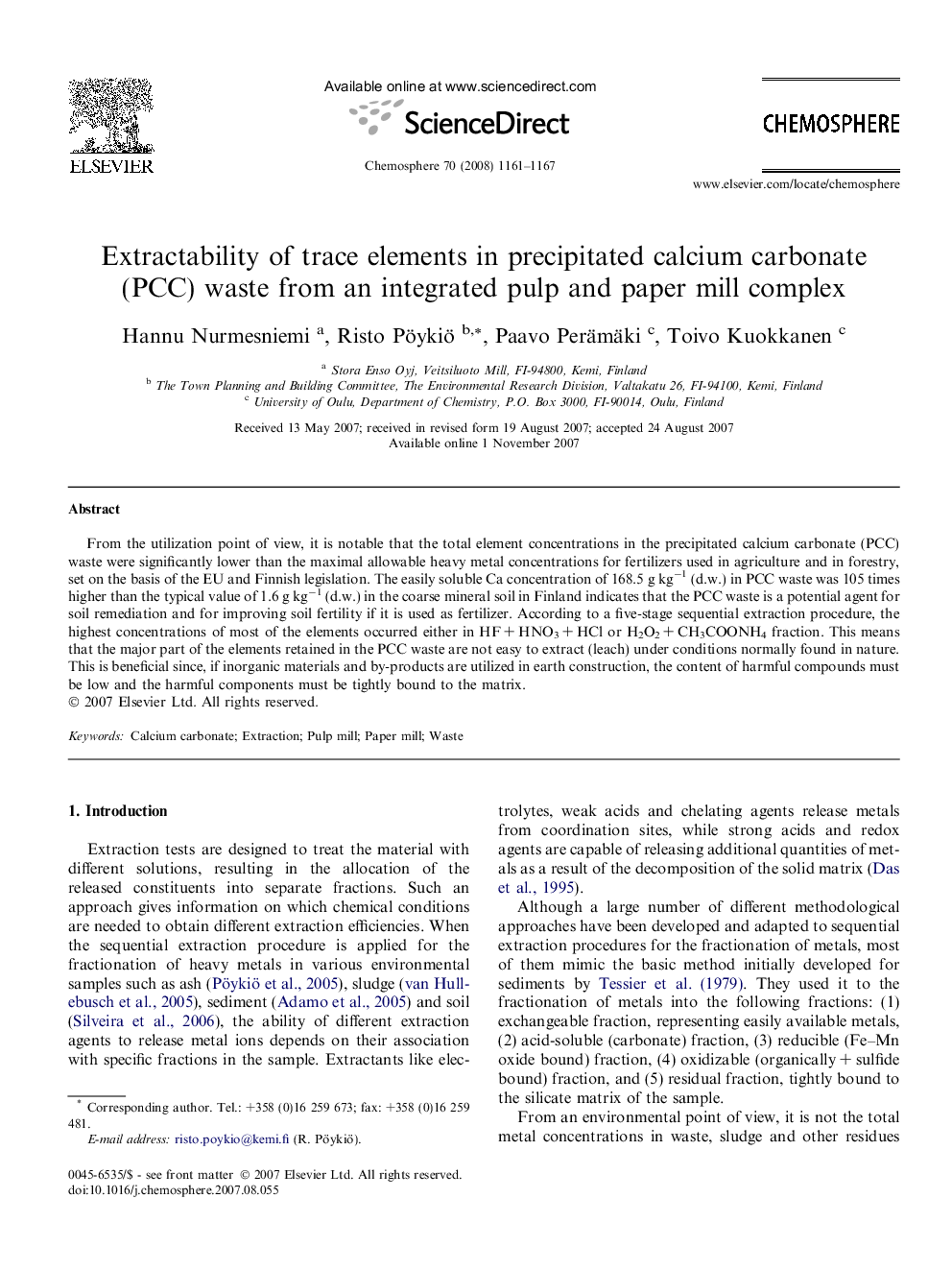| Article ID | Journal | Published Year | Pages | File Type |
|---|---|---|---|---|
| 4414144 | Chemosphere | 2008 | 7 Pages |
From the utilization point of view, it is notable that the total element concentrations in the precipitated calcium carbonate (PCC) waste were significantly lower than the maximal allowable heavy metal concentrations for fertilizers used in agriculture and in forestry, set on the basis of the EU and Finnish legislation. The easily soluble Ca concentration of 168.5 g kg−1 (d.w.) in PCC waste was 105 times higher than the typical value of 1.6 g kg−1 (d.w.) in the coarse mineral soil in Finland indicates that the PCC waste is a potential agent for soil remediation and for improving soil fertility if it is used as fertilizer. According to a five-stage sequential extraction procedure, the highest concentrations of most of the elements occurred either in HF + HNO3 + HCl or H2O2 + CH3COONH4 fraction. This means that the major part of the elements retained in the PCC waste are not easy to extract (leach) under conditions normally found in nature. This is beneficial since, if inorganic materials and by-products are utilized in earth construction, the content of harmful compounds must be low and the harmful components must be tightly bound to the matrix.
